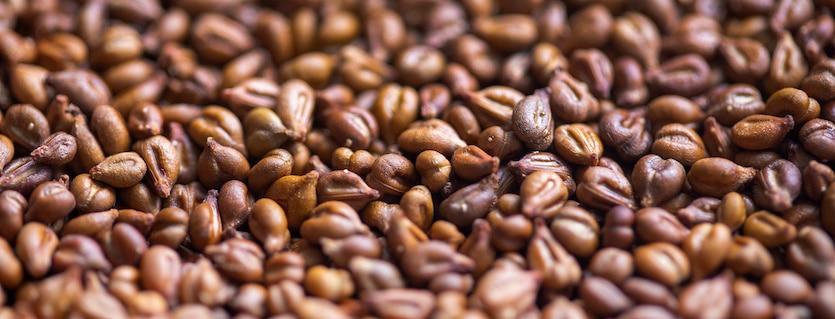
When you hear the word “innovation,” your mind probably jumps to technology. After all, technology has come a long way in the past 30 years—not to mention the entire 2 million years of human existence. But here at USANA, as we approach our 30th anniversary as a company, we’re thinking about a different type of innovation: nutritional innovation.
Three decades is a milestone that calls for reflection. The field of nutrition has come a long way in the past 30 years, and USANA has been there the whole way. With that in mind, we’re looking back at the top innovations in nutrition and wellness of the last 30 years. Read on for a crash course on the best nutritional research, products, and technological advances in recent history! (The following list is in no particular order.)
- Food Fortification
There are two types of nutrients that the body needs: macronutrients and micronutrients. Macronutrients include proteins, fats, and carbohydrates—all of which the body needs in relatively high quantities. Micronutrients—vitamins and minerals—are needed in smaller quantities.
Vitamins and minerals help with a variety of vital body functions but, unfortunately, many people do not consume the necessary amount. To help combat vitamin and mineral deficiencies among the general population, scientists developed the process of food fortification. The idea behind fortification is pretty simple: because people aren’t getting enough micronutrients, scientists developed ways to add micronutrients to foods. It is an especially common practice with staple foods, such as grains and dairy products.
Food fortification isn’t a new process—it’s been common practice in many countries since the 1920s. So why does it make our list of recent nutrition innovations? The answer is simple: food fortification is still a relatively new process in many developing countries. In 1970, for instance, only 20% of households around the world consumed iodized salt. By 2008 that number rose to 70%.
- Microbiome Research
New research is constantly shaping the way scientists understand the human body. And recently, some scientists have turned their attention to the gut. Or, more specifically, to the microbiome—the trillions of microorganisms that live in the small and large intestines.
Your microbiome plays a crucial role in helping your body process toxic food compounds, process and produce micronutrients, and break down complex carbohydrates. In short, the microbiome helps protect the body and digest food—both of which are vital to your health.*
So where does nutrition come in? Of the trillions of microorganisms that make up your microbiome, each play a different role. When everything is working smoothly—when your microbiome is “balanced”—these various microorganisms coexist without causing any problems. Recent studies have shown that a variety of factors can affect this balance. One such factor is diet.
There are a number of dietary factors that can influence the variety of organisms in your microbiome. If you’ve heard about prebiotics and probiotics, this is what they’re all about. Probiotic foods and supplements contain live bacteria (the good kind!) that help replenish and maintain balance in your microbiome.*
- Macro- and Micronutrient Tracking
As mentioned above, your body requires both macronutrients and micronutrents—and it needs specific quantities of each. (This is why there are percent daily values (DVs) listed on nutrition labels.) Here’s the problem: your body is unique and so are its nutritional needs. Sure, there are baseline levels of nutrients that everyone should be consuming, but beyond that, your required nutrient consumption will depend on your body, your activity levels, and your health and wellness goals for yourself.
Here’s the good news: thanks to a wide variety of fitness and nutrition apps, tracking your macro- and micronutrient consumption is easier than ever. Whether your goal is to build muscle, shed a few pounds, or simply maintain your current level of health, these apps can help you set goals, track a variety of data points related to your nutrition, and identify dietary changes that will help you meet your goals.
These apps—which are often used in coordination with wristbands that monitor heart rate—are a perfect example of the way technological advances and innovations can intersect with the field of nutrition.
- Allergen Awareness
Food allergies and sensitivities are far more widespread than previously acknowledged. This has caused a boom in allergy-safe products. Whether you’re lactose intolerant, allergic to gluten, or have a tree nut allergy, there are more and more products hitting the shelves each year that are safe for your consumption. Here at USANA, we jumped on this early, providing a wide variety of allergy-safe products from the get-go.
- Vitamin D Dosage
When it comes to healthy bones, your body relies heavily on two micronutrients: vitamin D and calcium. Vitamin D helps the body absorb calcium, but it does a whole lot more, from supporting a healthy immune system to promoting proper muscle function. Needless to say, it’s an important part of your diet. And for years, scientists and dieticians underestimated just how much vitamin D your body needs each day.*
Many sources recommended between 600 and 800 international units (IUs) of vitamin D daily, but these levels may not be enough to prevent vitamin D deficiency. When you’re not getting enough vitamin D, you may not be feeling your best. Vitamin D helps with maintaining energy levels and supporting mood.*
At USANA, we reformulated USANA CellSentials and our vitamin D supplement to contain higher levels of vitamin D before anyone else made the switch. This level of vitamin D intake daily can help your body maintain proper levels of vitamin D, even when you aren’t spending lots of time out in the sun.
- Widespread Adoption of Traditional Chinese Medicine
In recent years, Traditional Chinese Medicine (or TCM) has experienced growing popularity in the United States and Europe. This alternative framework for approaching health and wellness focuses on keeping the body balanced and includes a variety of practices such as acupuncture, forms of massage, and cupping. There is also a dietary aspect to this medicinal framework.
These practices and others have been adopted by some health practitioners in the United States and integrated with Western medicine. This isn’t an innovation per se, as TCM has existed for centuries, but it is being used in innovative ways alongside other medical frameworks.
- Upcycling Grape Seeds

It’s no secret that there’s a lot of waste in the food industry. Naturally, people are always looking for ways to reduce that waste—or ways to put waste products to good use. That’s exactly what USANA did with grape seeds.
The story starts with polyphenols, a category of micronutrients found in plants. Polyphenol consumption is associated with a number of health benefits—so naturally, people want to maximize their polyphenol consumption. Many supplements sourced their polyphenols from maritime pine bark, which is a limited resource. Here at USANA, our scientists found that grape seeds contained similar levels of polyphenols, as well as additional polyphenols not found in pine bark. And that’s not even the best part. Grape seeds are typically a form of food waste—by sourcing polyphenols from those seeds, USANA is cutting down on that waste.
- Higher Protein Consumption
Most people—especially gym-goers—are familiar with the benefits of eating protein-rich foods. Protein is good for your brain and helps your body build and repair muscle tissue. The amount of protein typically recommended for daily consumption is between 0.8 and 0.83 grams of protein per kilogram of body weight.
That being said, recent studies suggest that there are certain advantages to consuming more protein per day—especially for individuals looking to shed a few pounds. High-protein diets (that is, diets that include more protein than the previously recommended amount) have been shown to help with weight management and promote the synthesis of lean muscle mass.
- Meat Substitutes
As most long-time vegetarians can attest, meat substitutes—plant-based products that simulate the flavor and texture of meat—have been around for a long time. For years, however, these products were not very meat-like nor nutritious. Recent products have changed the game entirely.
Nowadays, vegetarians, vegans, and those simply avoiding red meat, have a variety of meat-substitutes available at most grocery stores. These recently developed nutritional products contain similar levels of protein to ground beef, but less fat and cholesterol. What’s more, the flavor and texture is closer to real meat than ever before.
- Glycemic Index
When you eat carbohydrates, your blood sugar levels rise. This isn’t necessarily a problem—carbs are an essential nutrient, after all—but it is something to keep in mind. And, as it turns out, some foods raise your blood sugar more than others. Enter the concept of glycemic index. This is essentially just a way of measuring the amount of carbohydrates in a food and the rate at which they raise your blood sugar levels, and assigning that food a numerical value accordingly.
So foods that range from 1-55 on the glycemic index (GI) are considered low-glycemic. Foods in the 56-69 range are moderately glycemic and anything above that is considered high-glycemic.
Using the glycemic index as a guide, some people follow what is known as a GI diet. This diet focuses exclusively on the GI value of foods. At USANA, we take glycemic index into account while developing food products, working to ensure that our products are low-glycemic.
References
